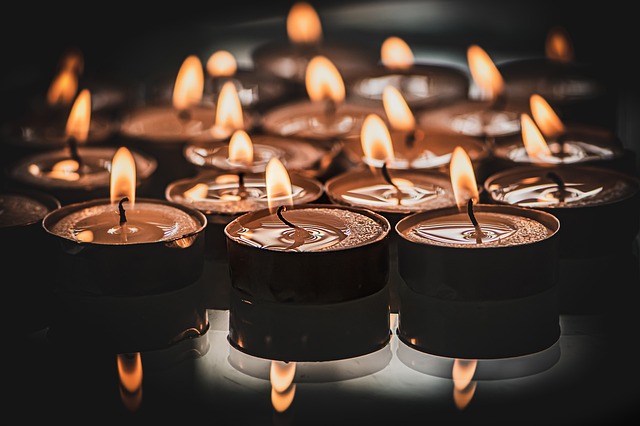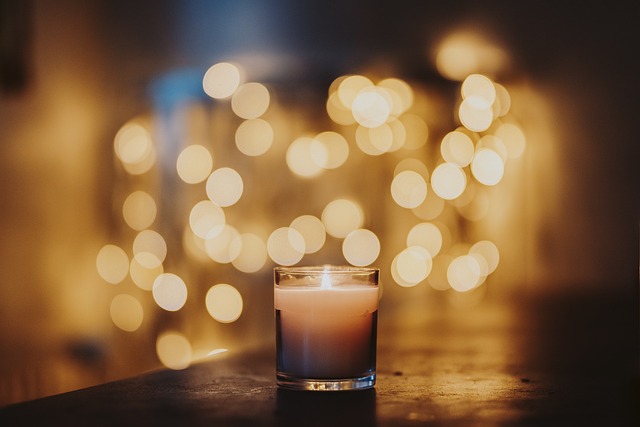In theory, a candle should be able to warm 2 or 3 square feet of space. On average, a candle will put out between 75 and 85 BTUs per hour. To heat one square foot of your home, you need about 34 BTUs per hour. We know that heat is measured in British Thermal Units or BTUs.
Let’s say you’re in a room of 100 square feet. According to the math, you would need around 3,400 BTUs per hour to heat the space effectively. That’s approximately 50 candles. Unless you’re summoning up a demon army, it’s unlikely you have that many candles lying around.”
What factors contribute to understanding candle heat output?
Understanding candle heat output involves considering several contributing factors, such as candle composition, size, wick type, and burning time, all of which influence the amount of heat generated.
Explanation of BTUs (British Thermal Units) as a Measure of Heat:
BTUs are a standard unit for measuring heat energy. In the context of candle heating, BTUs quantify the amount of heat produced by a candle over a certain period.
In addition, one BTU is the amount of heat required to raise the temperature of one pound of water by one degree Fahrenheit.
Moreover, this unit helps us compare the heating capacity of different sources, including candles, and understand their effectiveness in warming spaces.
Average BTU Output of a Candle (75 to 85 BTUs per Hour):

The heat output of a candle varies based on factors like its size, composition, and burning conditions.
On average, a typical candle releases around 75 to 85 BTUs of heat per hour. This value can serve as a baseline to estimate how many candles are needed to generate a certain level of warmth in a room.
Discussion on Factors Affecting Candle Heat Output:
Several factors influence the BTU output of a candle:
- Candle Composition: Beeswax, paraffin, soy, and other materials have different combustion properties, affecting their heat production.
- Candle Size and Shape: Larger candles generally release more heat due to a larger wax volume and increased surface area.
- Wick Type and Size: The wick material and thickness impact the rate of fuel consumption and heat generation.
- Draft and Ventilation: Adequate airflow affects the candle’s combustion and heat dispersal.
- Candle Quality: Higher-quality candles with purer ingredients often burn more efficiently, resulting in consistent heat output.
How to calculate BTU requirements for room heating?
Calculating BTU requirements for room heating involves assessing the room’s dimensions, insulation, climate, and desired temperature.
BTU per Square Foot Guideline for Home Heating (e.g., 34 BTUs per Hour):
The heating requirement for a space depends on its size. A common guideline is that you need about 34 BTUs per square foot to maintain a comfortable temperature in a home.
Moreover, this guideline helps you estimate the overall BTU requirement for a room based on its dimensions.
Determining the BTUs Needed to Heat a Specific Room Size:
To calculate the total BTUs needed for a room, you multiply the room’s square footage by the recommended BTUs per square foot.
For instance, a 100-square-foot room would require approximately 3,400 BTUs per hour (100 sq ft * 34 BTUs/sq ft).
Importance of Accurate BTU Calculations for Comfortable Heating:
Accurate BTU calculations are essential for ensuring proper room heating. Inadequate heating can lead to discomfort and inefficient energy use.
By calculating the precise BTU requirements, you can select the right number of candles or other heating sources to maintain a comfortable environment.
In addition, proper calculations also prevent overloading or underutilizing candles, enhancing their effectiveness for space heating.
How do you apply candle BTUs to determine suitable room sizes for heating?
Applying candle BTUs to determine suitable room sizes for heating entails evaluating the candle’s heat output. Moreover, converting it to BTUs, and then comparing this value to the room’s insulation and desired temperature to gauge its heating potential
Example Scenario: A Room with 100 Square Feet:
Imagine you have a room that measures 100 square feet. This scenario will serve as a practical example to illustrate how candle BTUs can be applied to room size calculations for heating.
Calculating the Required BTUs for Effective Heating (e.g., 3,400 BTUs per Hour):
To effectively heat the 100-square-foot room, you would calculate the BTUs required using the guideline of 34 BTUs per square foot. So, 100 sq ft * 34 BTUs/sq ft = 3,400 BTUs per hour.
Moreover, this value represents the amount of heat needed to maintain a comfortable temperature in the given space.
Deriving the Number of Candles Needed Based on Average BTU Output:
Given the average BTU output of a candle (75 to 85 BTUs per hour), you can determine how many candles are needed to generate the required 3,400 BTUs per hour.
In addition, divide the required BTUs by the average BTU output of a candle: 3,400 BTUs / 80 BTUs (midpoint of 75 and 85) = approximately 42.5.
Since you can’t have a fraction of a candle, you would likely need around 43 candles to achieve the desired heating in this scenario.
What Are The Practical Considerations and Limitations?
Discussing Practical Challenges of Using Candles for Room Heating:
- Insufficient Heating for Large Spaces: Candles might struggle to provide adequate warmth in larger rooms due to their limited BTU output.
- Cost and Sustainability: Depending solely on candles can become expensive and may not align with sustainability goals.
- Maintenance and Monitoring: Candles require continuous monitoring and replacement as they burn out.
Safety Considerations: Fire Hazards, Ventilation, and Indoor Air Quality:
- Fire Hazards: Open flames pose a fire risk, especially if candles are left unattended or placed near flammable materials.
- Ventilation: Candles consume oxygen and produce carbon dioxide, affecting indoor air quality. Proper ventilation is crucial to ensure a fresh air supply.
- Indoor Air Quality: Poor-quality candles can release harmful particles and chemicals into the air when burned, impacting indoor air quality.
Exploring Alternatives: Comparing Candle Heating to Traditional Heating Methods:
- Efficiency: Traditional heating methods like electric heaters or central heating systems are generally more efficient in providing consistent and controlled warmth.
- Safety: Electric heaters often have built-in safety features and eliminate the risk of open flames.
- Convenience: Candles require regular replacement and maintenance, while modern heating systems offer convenience with programmable settings.
How Can You Balance Energy Efficiency and Ambiance?

Striking a balance between energy efficiency and ambiance involves selecting lighting and heating solutions that not only create a comfortable atmosphere but also utilize efficient technologies and practices to minimize energy consumption.
Highlighting the Cozy Ambiance Created by Candle Heating:
- Visual Appeal: The warm, flickering glow of candlelight creates a cozy and inviting atmosphere, contributing to a sense of comfort and relaxation.
- Aesthetic Enhancement: In addition, candles can transform the ambiance of a space, making it feel more intimate and serene.
Addressing the Trade-off Between Energy Efficiency and Aesthetic Value:
- Energy Efficiency: While candles offer ambiance, their heat output might not match the efficiency of dedicated heating sources. It’s important to balance aesthetic desires with practical heating needs.
- Energy Management: Additionally, using candles as supplementary heating or during specific times (e.g., evening relaxation) can strike a balance between comfort and energy conservation.
Encouraging Environmentally Conscious Heating Practices:
- Sustainable Materials: Opt for candles made from sustainable materials like soy or beeswax to reduce environmental impact.
- Reduced Energy Consumption: Moreover, using candles mindfully can lower electricity consumption during cooler evenings, contributing to a more eco-friendly lifestyle.
FAQ’s :
Can you use candles to heat a room?
Yes, candles can provide some heat to a room, but their effectiveness is limited, especially for larger spaces.
How much heat can one candle give off?
On average, one candle can give off about 75 to 85 BTUs (British Thermal Units) of heat per hour.
How many candles light a room?
The number of candles needed to effectively light and warm a room depends on its size and insulation. Larger rooms might require numerous candles.
How many degrees is a candle?
A candle itself doesn’t have a specific temperature in degrees. Its heat output contributes to raising the ambient temperature of the surrounding space.
Are candle heaters safe?
Candle heaters, which often involve using specialized equipment to distribute heat from candles, can be safer than open flames but should still be used with caution. Fire hazards and ventilation need consideration.
Is warming candles better than burning?
Warming candles, which diffuse scent without burning, can be a safer and longer-lasting option compared to traditional burning candles. They provide fragrance without producing open flames or melting wax.
Conclusion
In conclusion, exploring the question of how many candles are needed to effectively heat a room has provided us with insights into the fascinating world of candle heating.
By understanding the dynamics of candle heat output, BTU calculations, practical considerations, and the balance between energy efficiency and ambiance, we’ve gained a deeper appreciation for this unconventional heating method.
Moreover, we’ve discovered that candle heating is not just about warming spaces, but also about creating a cozy and inviting atmosphere through the soft glow of candlelight.
However, the practical application of candles for room heating comes with its own set of challenges, from managing adequate heat output to addressing safety concerns and maintaining indoor air quality.
In addition, through the examination of factors such as candle material, size, placement, and room conditions.
We’ve learned that successful candle heating requires a thoughtful approach that takes into account both technical considerations and the desired ambiance. It’s essential to strike a balance between the allure of candlelit warmth and the need for energy-efficient and safe heating practices.

